Build Better Courses Faster: 6 Powerful Ways to Leverage the Tutor LMS Content Bank

It’s a familiar feeling for many online educators. You’ve just poured your energy into launching a new course. Then, you look at the next project on your list and realize it needs a similar “Welcome” module, the same “How to Submit Assignments” video, and a nearly identical quiz on basic concepts. The thought of rebuilding it all from scratch can be truly deflating.
This cycle of repetitive work does more than just eat up your valuable time. It drains the creative energy you need for innovative teaching and directly slows down your ability to grow your business. For many, improving course creation efficiency feels like an uphill battle, especially if you’re a solo course creator juggling every task.
Finding a smarter way to work is the key to breaking this cycle for good. The Tutor LMS Content Bank provides that solution. It’s much more than a simple feature, it’s a strategic workflow designed to help you reclaim your time and focus on what truly matters.
6 Advanced Strategies to Build Tutor LMS Courses Faster
Now that we know the problem of repetitive work, let’s get into some practical solutions. The following six strategies are designed to fundamentally change your course creation workflow. They leverage the full power of the Tutor LMS Content Bank, helping you build better courses with less effort.
Strategy 1: Master the “Atomic Lesson” Principle
One of the most powerful concepts you can apply to your course creation is atomic learning design. The idea is to break down your subject matter into its smallest, self-contained parts, or “atoms.” Each atom is a complete piece of information that can stand on its own without needing the context of a specific course. This approach turns your content into a powerful library of reusable learning objects.
You can begin by identifying the content that you currently repeat across different courses. These are perfect candidates for your first reusable lessons. Instead of creating them inside a course, you build them directly within the Content Bank.
Some excellent examples of atomic lessons include:
- A standard “Meet the Instructor” biography page or video.
- A “How to Submit Assignments” video tutorial.
- An essential “Glossary of Key Terms” for your subject area.
- A pre-formatted “Module Introduction” template you can fill in later.
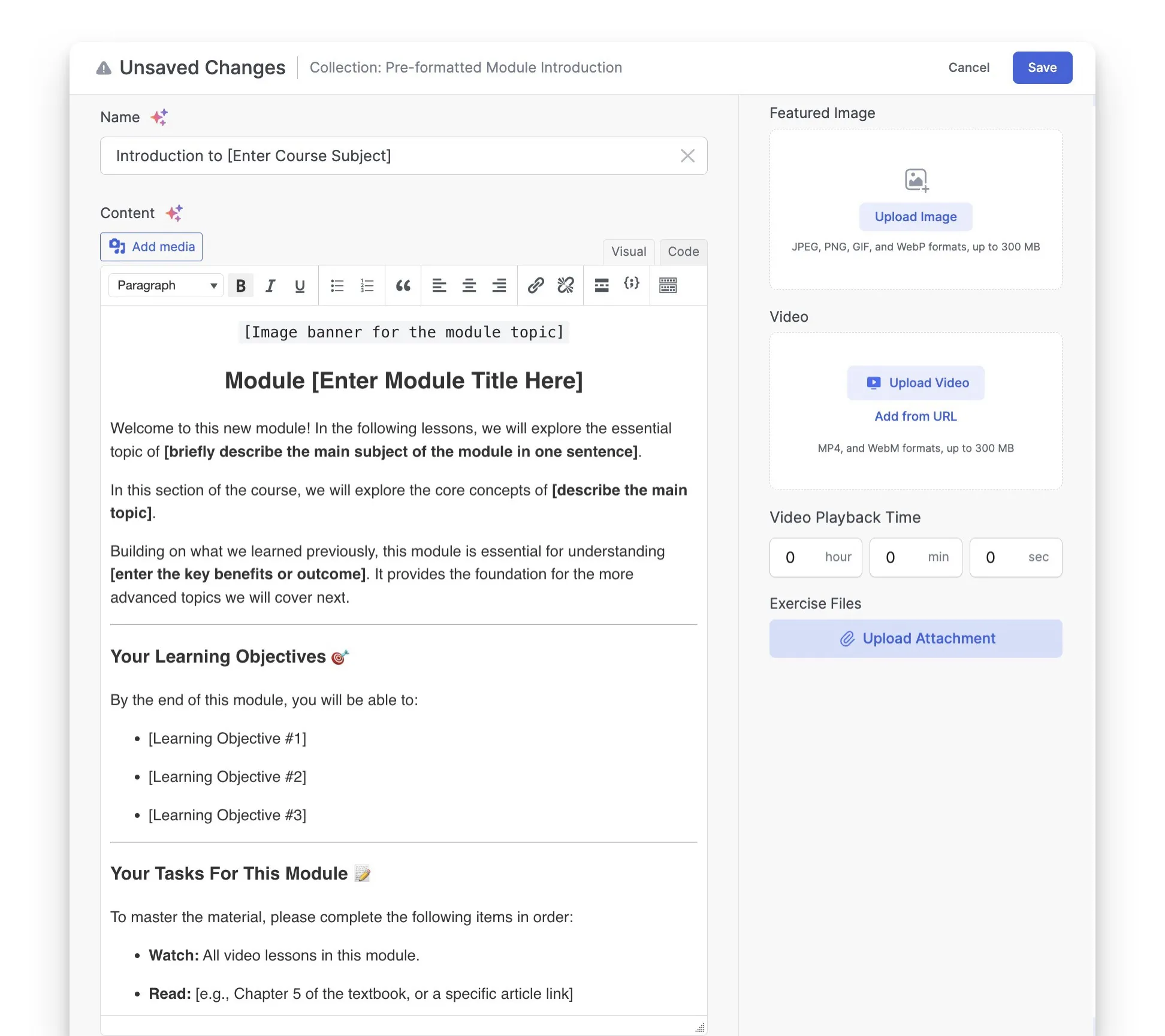
When you adopt this method of modular course design, building a new course feels less like writing a novel from scratch and more like building with LEGOs. You can pull these quality, pre-made pieces together to assemble new modules in a fraction of the time. It’s an incredibly effective way to accelerate course building while also improving the consistency of your content.
Strategy 2: Create Smarter Quizzes with Tiered Questions
Just as you can separate lessons into reusable “atoms,” you can apply the same smart strategy to your quizzes. Many instructors save individual questions, but a more powerful approach is building a strategic Tutor LMS question bank. This method involves creating organized sets of questions, turning your Content Bank into a library of quiz pools.
Getting started is very simple. Instead of having one giant folder of questions, you can create different “Collections” based on a theme or difficulty level. You might have Collections named “Beginner Python Questions,” “Intermediate Python Questions,” and “Expert Python Questions.” This simple step transforms a messy list into a highly organized and searchable assessment resource.
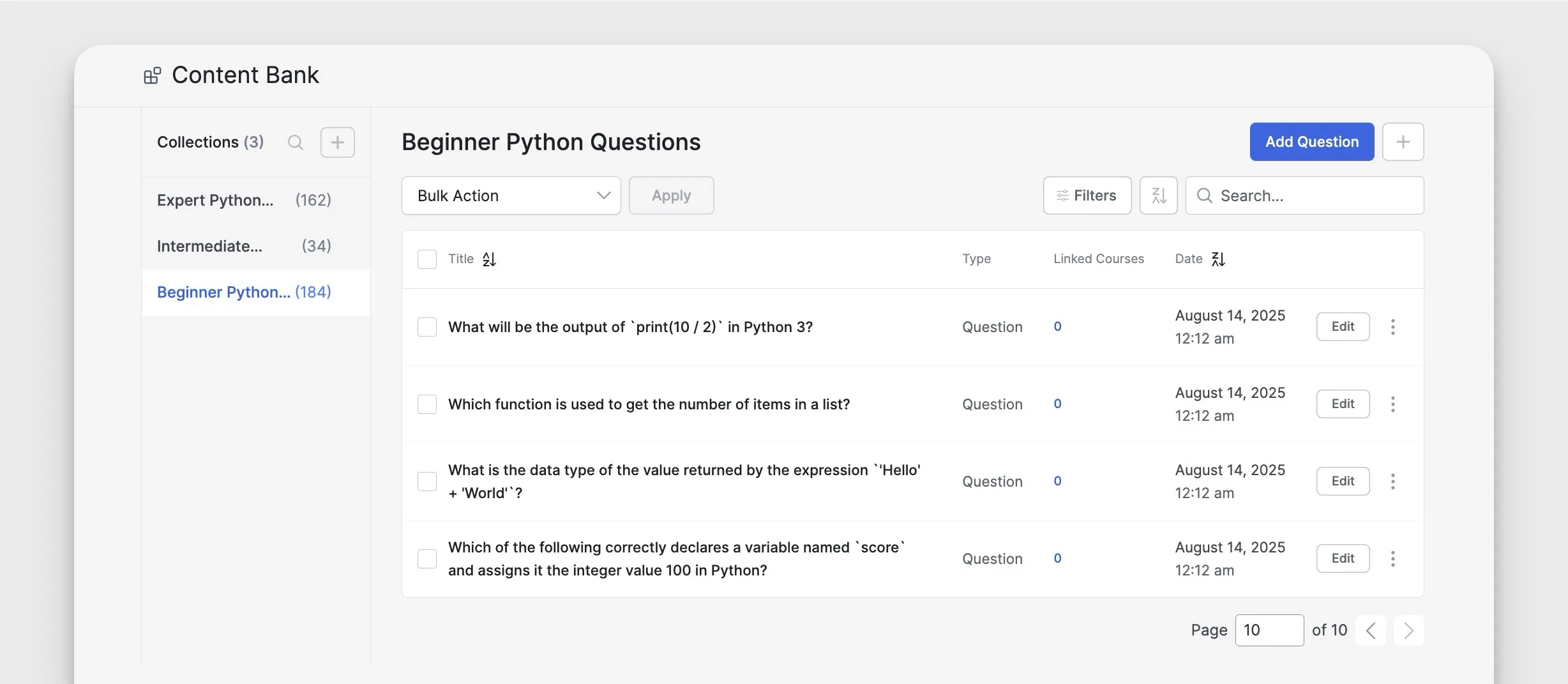
Once your quiz pools are set up, the possibilities for dynamic quiz generation expand greatly. For example, with these organized collections, you can:
- Quickly generate pre-assessment tests for new students by pulling only from the “Beginner” pool.
- Build a comprehensive final exam by selecting 10 questions from each difficulty tier.
- Create varied practice quizzes for different modules, ensuring students get a fresh set of relevant questions each time.
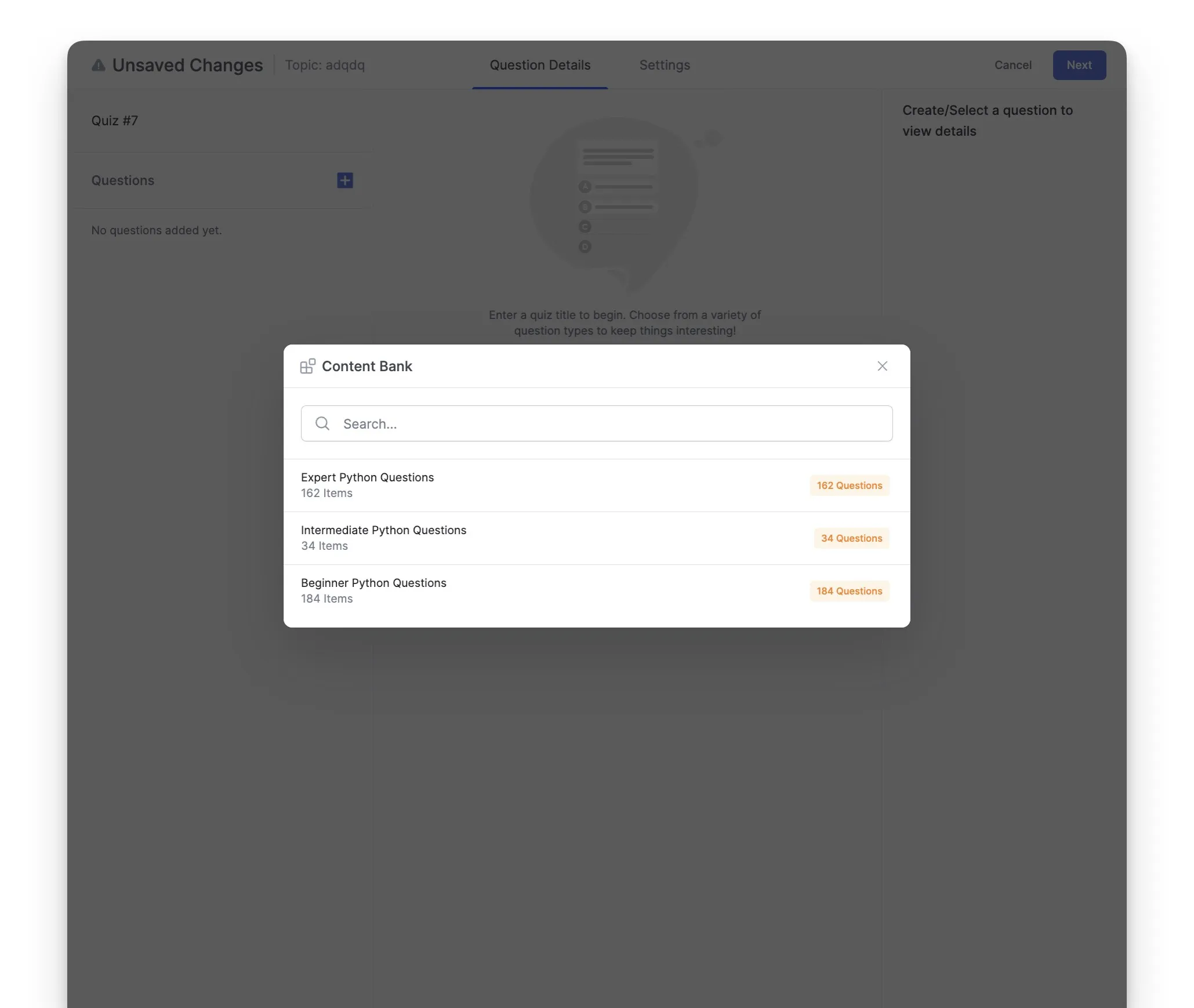
Strategy 3: Save Time with Reusable Assignment Templates
We’ve seen how reusing lessons and quiz questions can save time. That same powerful logic can be applied to one of the most detailed parts of course creation: setting up assignments. Creating Tutor LMS assignment templates is one of the most effective LMS productivity hacks you can adopt to streamline course development.
The approach involves building a single, perfect master template for any assignment you use frequently, like a weekly worksheet or a final project. You create this master assignment directly in your Content Bank, filling out every detail in advance.
A complete assignment template typically includes:
- Pre-set point values and deadlines (e.g., “Due 7 days after enrollment”).
- A pre-written description with clear goals.
- Standardized submission instructions so students always know what to do.
- A detailed grading rubric to ensure fair and consistent evaluation.
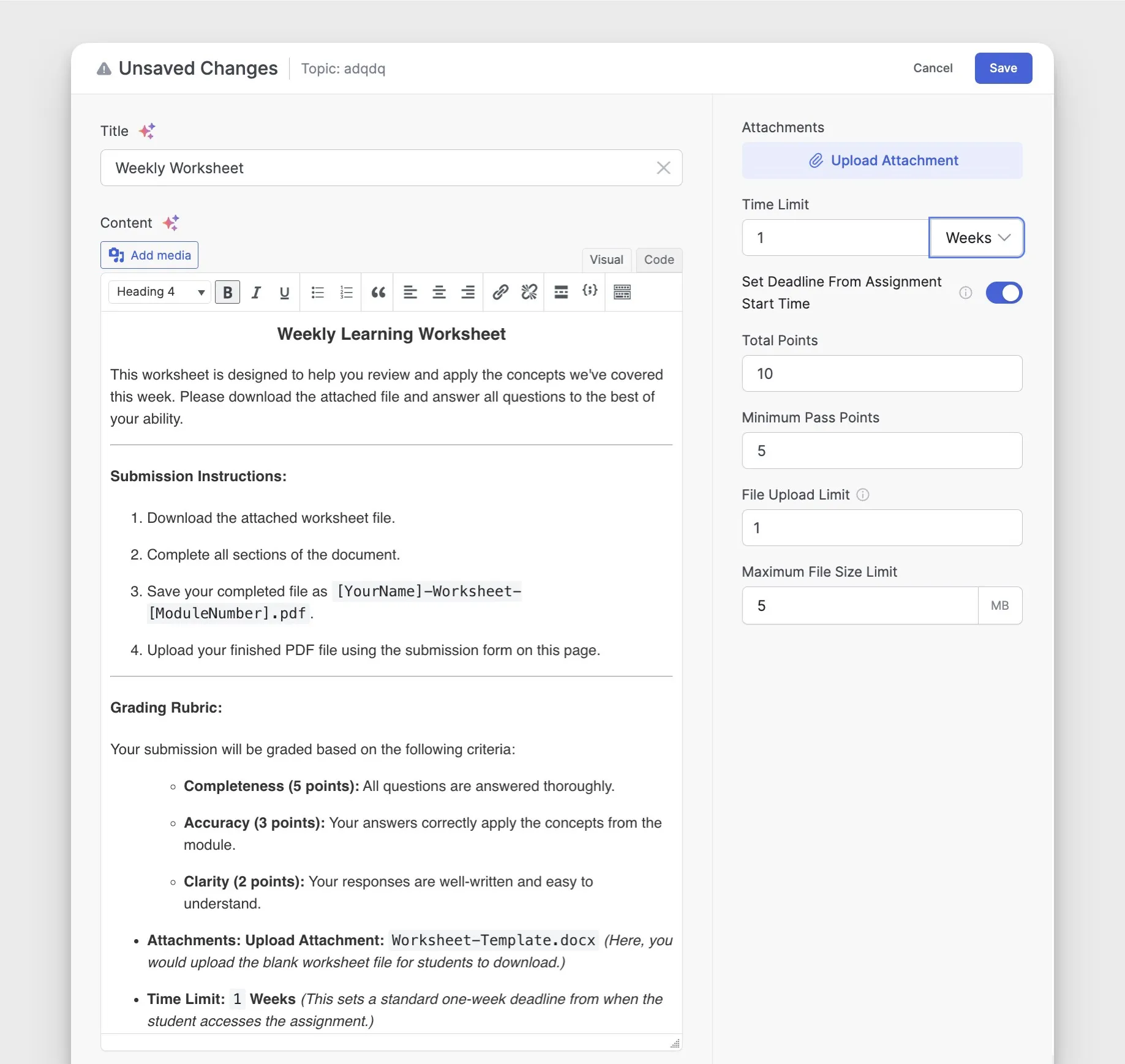
The benefit is a huge time-saver. When you need to add an assignment to a course, you can insert your polished, comprehensive template with just one click. This not only saves you from repetitive data entry but also guarantees that every student receives the same clear instructions and grading criteria, every single time.
Strategy 4: Organize Your Entire Course History with “Import from Courses”
So far, we’ve focused on creating new reusable content. But you might be wondering, “What about all the great lessons, quizzes, and assignments I’ve already built in my past courses?” This is your chance to turn scattered assets into a structured, searchable system.
The Import from Courses feature in Tutor LMS Content Bank lets you pull all that valuable, existing content into your Content Bank. It’s a way to organize your entire back-catalog, making everything you’ve ever created searchable and reusable.
The process is quite simple and can be broken down into two main steps:
- First, you create a clean set of empty, neatly labeled Collection in your Content Bank. You might organize them by topic (e.g., “Beginner Concepts,” “Advanced Topics”) or by content type/category.
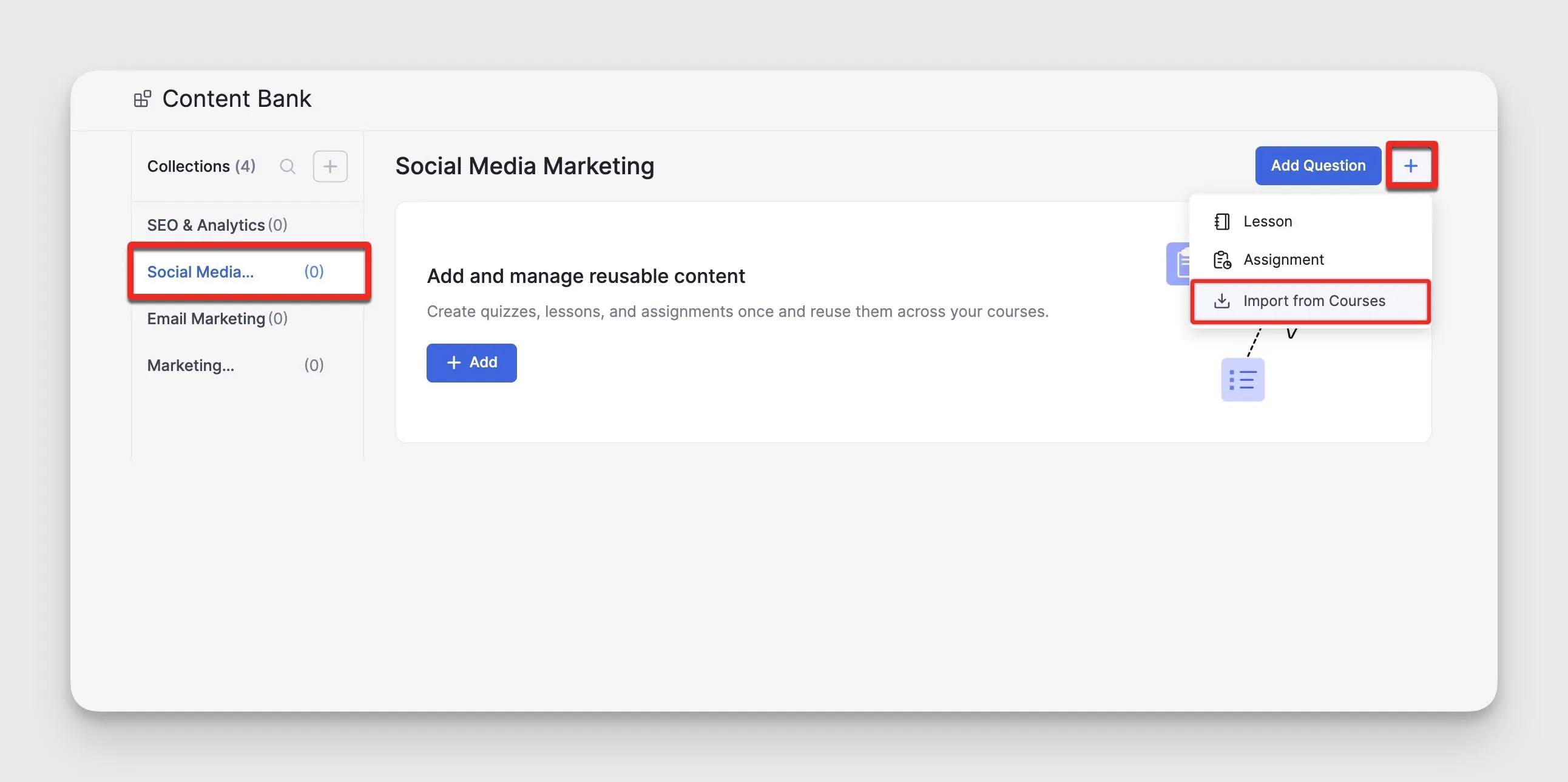
- Next, you use the “Import from Courses” function to import lessons, quizzes, and assignments from your existing courses all at once or select the specific course(s) into these new, organized collections.
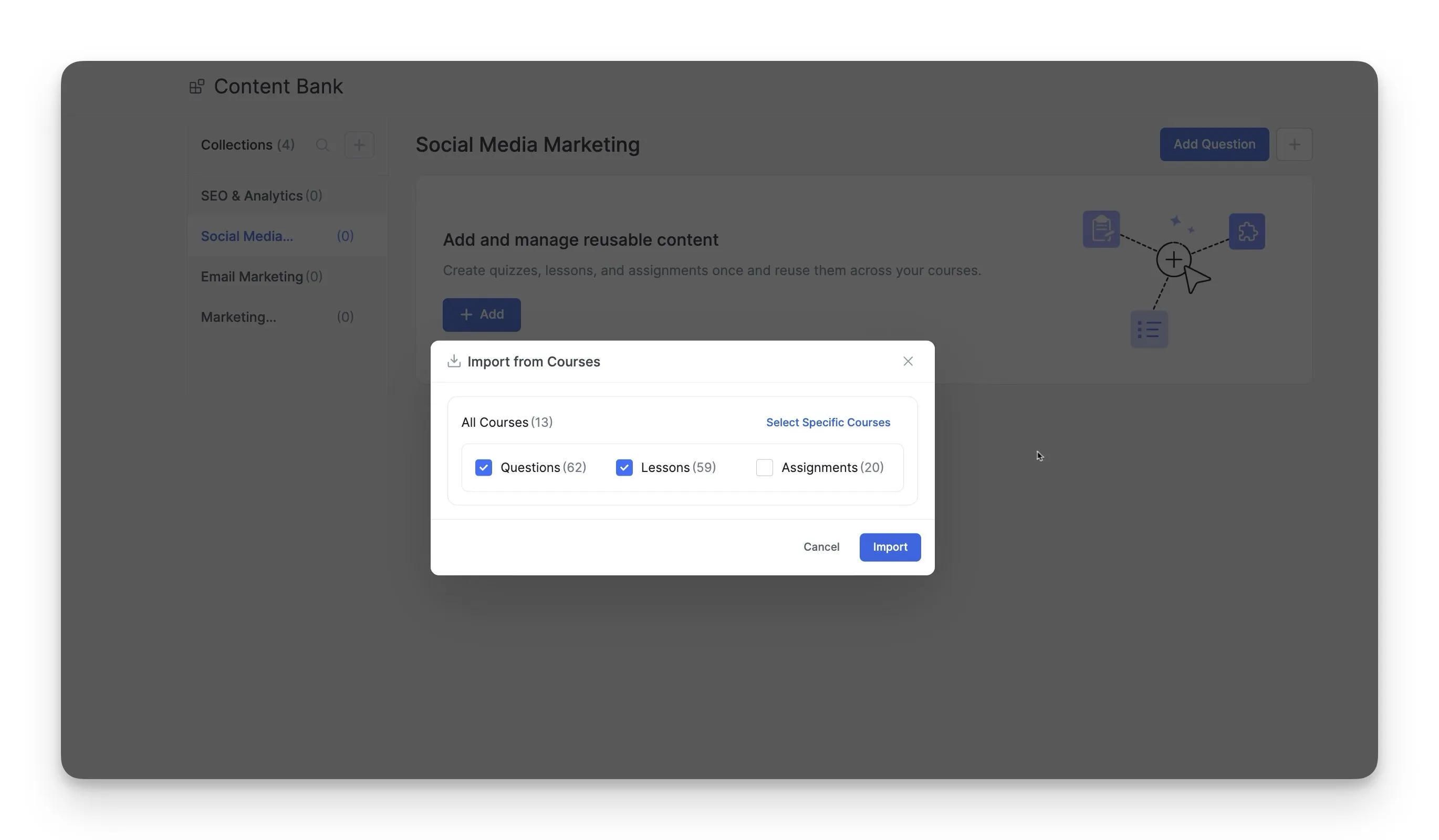
The result of this project is a complete, future-proofed content library. All your hard work from previous years is no longer locked away inside old courses. Instead, it becomes a powerful, indexed resource that you can pull from at a moment’s notice, saving you countless hours in the future.
Strategy 5: Provide Targeted Support with a “Common Misconceptions” Quiz Bank
A great course structure is important, but providing targeted help throughout the learning journey is what sets excellent instructors apart. This strategy offers a proactive way to support students with the specific topics they find most difficult.
As an instructor, you know the exact points in your material where students often get stuck or make the same mistakes. You can use this knowledge to create a special question bank dedicated to these common misconceptions.
This involves creating a new Collection in your Content Bank for these specific questions. You can then use this quiz bank in a couple of powerful ways:
- It can be offered as an optional practice quiz for students who want extra help.
- It can be added to the end of a difficult lesson to reinforce the correct concepts.
By anticipating where students might struggle, you create a more supportive, adaptive learning environment. It also has the practical benefit of reducing the number of repetitive support questions you have to answer.
Strategy 6: Build a Reusable “Further Reading” Resource Library
While the last strategy helps support students who are struggling, our final tip is for those who are eager to learn more. A great way to add value to your courses is by providing high-quality supplemental materials. You can do this efficiently by creating a central resource library right inside your Content Bank.
This involves building an evolving collection of your favorite online resources. It’s a place where you gather all the curated content you recommend, such as insightful articles, helpful videos, or downloadable guides.
To do so, you can create a Collection called “Resource Library” and then build individual lessons for different topics. For example, your library might contain:
- A lesson with links to top industry blogs.
- A page with your recommended books on the subject.
- A list of valuable YouTube channels for visual learners.
- A downloadable PDF of key industry reports.
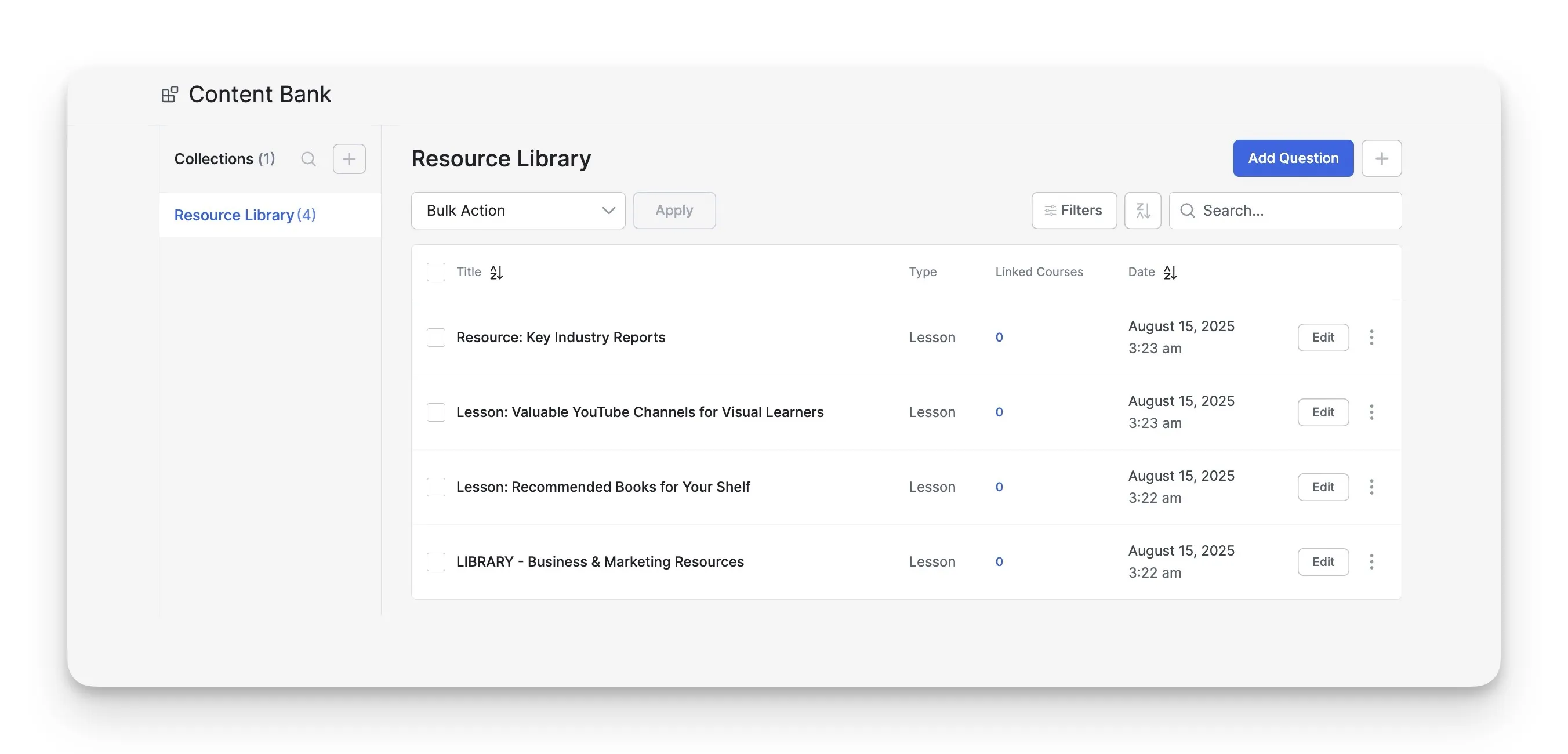
Instead of hunting for the same links every time you build a new course, you can now simply import a relevant “Resource Library” lesson. These enrichment activities encourage deeper learning and show students you are invested in their growth. Best of all, when you discover a new resource, you only have to add it once to the Content Bank for it to be always available.
Conclusion: From Content Creator to Smart Architect
We’ve explored six powerful strategies to transform your LMS workflow, moving beyond repetitive tasks to a smarter way of working. By using the Tutor LMS Content Bank, you can build courses like an architect, not just a builder.
You now have a clear path to:
- Create a library of reusable content with atomic lessons.
- Build a dynamic Tutor LMS question bank for better assessments.
- Streamline course development in Tutor LMS with standardized templates.
- Organize your entire history of work into a central, searchable library.
The real benefit isn’t just about how to build Tutor LMS courses faster. It’s about reclaiming your most valuable resource: your creative energy. When you spend less time on repetitive work, you have more time to innovate, engage with your students, and grow your business. Now, you have the tools and the strategy to do just that.
Start Using Tutor LMS Today
Ready to take your online courses to new heights? Download Tutor LMS now and enjoy a journey of eLearning excellence.